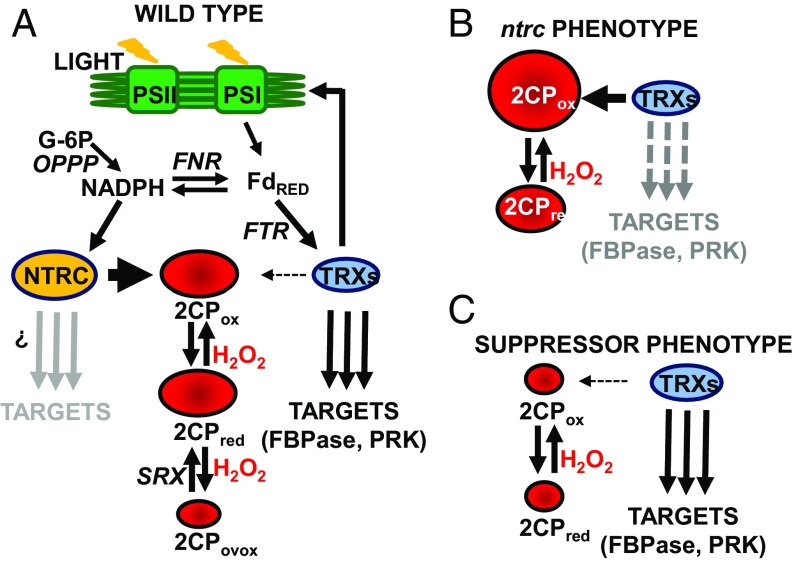Fig. 5.
A proposed model of the control of chloroplast redox homeostasis. (A) Light-driven photochemical reactions of photosynthesis generate reduced Fd (FdRED) and NADPH by the action of Fd-NADP+ reductase (FNR). Additionally, NADPH can be produced by the oxidative pentose phosphate pathway (OPPP). Chloroplast Trxs are responsible for the light-dependent redox regulation of metabolic pathways and the feedback regulation of photochemical reactions. 2-Cys Prxs display three thiol-based redox states: oxidized (2CPox), reduced (2CPred), and overoxidized (2CPovox), which is reduced by sulfiredoxin (SRX). (B) In NTRC-deficient plants, the accumulation of oxidized 2-Cys Prxs provokes draining of reducing power from the pool of Trxs, and, consequently, redox regulation of their targets is impaired. (C) Decreasing the content of 2-Cys Prxs accordingly decreases the draining of reducing power from the pool of Trxs, and the redox regulation of their targets is thereby restored.

